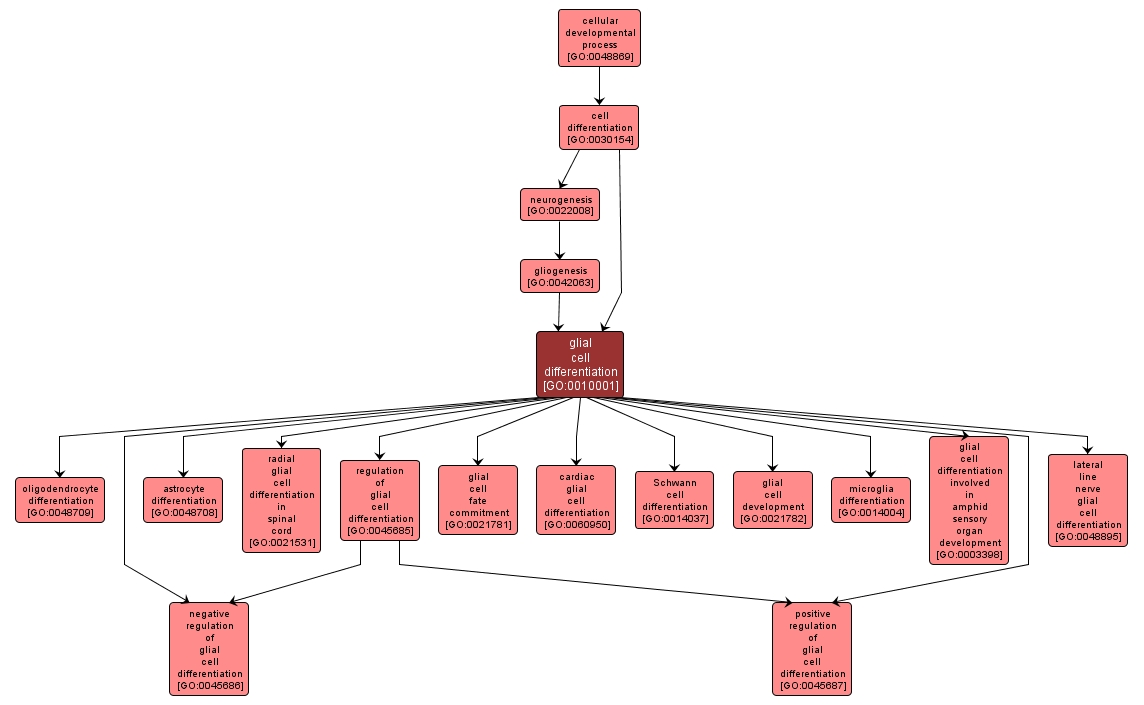GO TERM SUMMARY
|
| Name: |
glial cell differentiation |
| Acc: |
GO:0010001 |
| Aspect: |
Biological Process |
| Desc: |
The process whereby a relatively unspecialized cell acquires the specialized features of a glial cell. |
Synonyms:
- neuroglia differentiation
- glia cell differentiation
- GO:0043360
- GO:0007404
|
|

|
INTERACTIVE GO GRAPH
|














